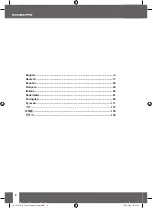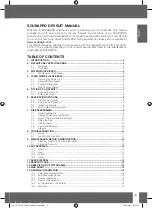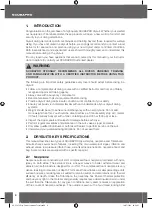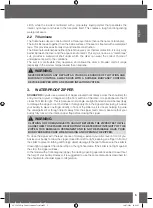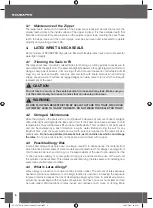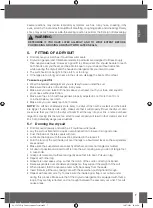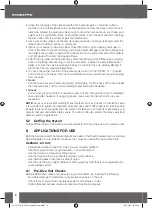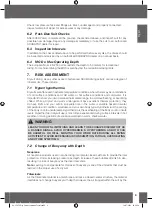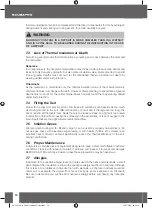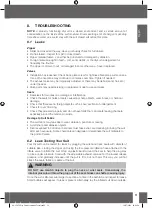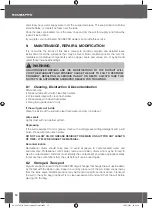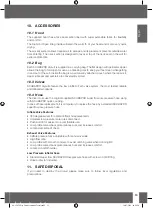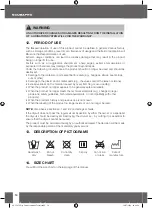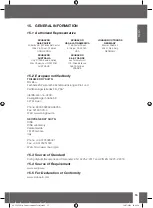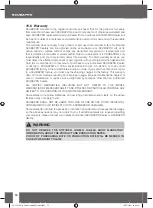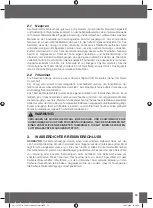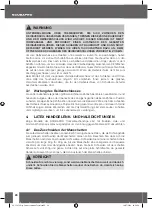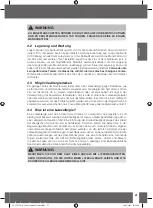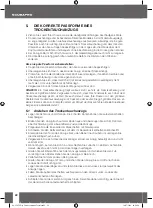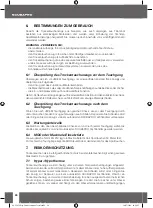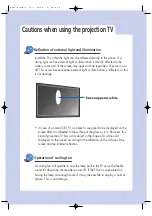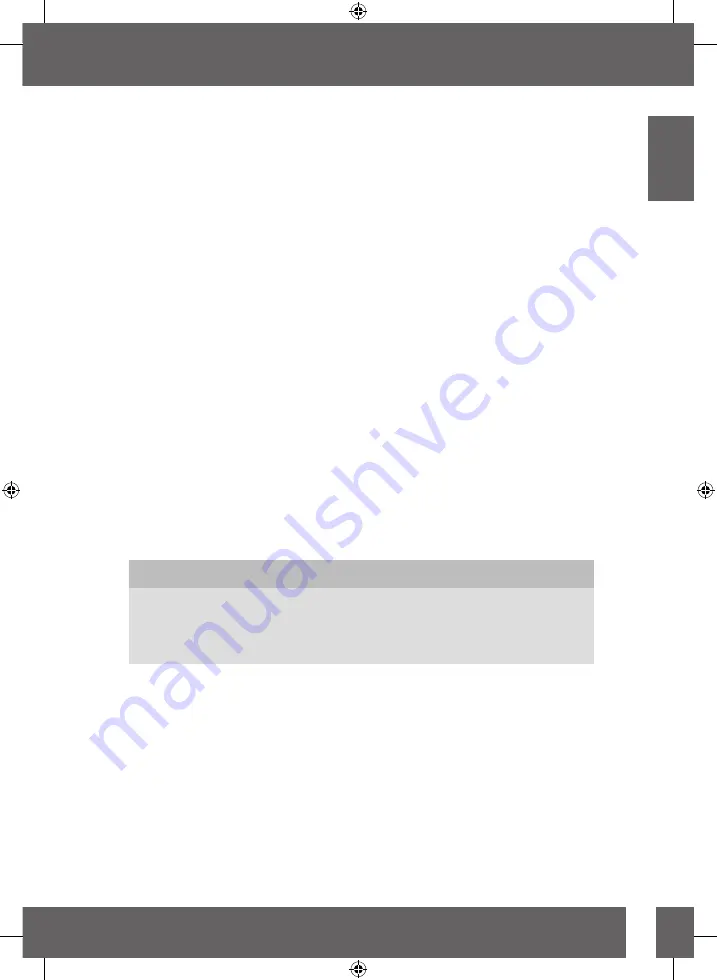
9
English
Check low pressure hose and fittings are intact, undamaged, and properly connected.
Inspect waterproof zipper for excess wear or any damage.
6.2 Post-Dive Suit Checks
After EVERY dive, complete all the pre-dive checks listed above, and inspect suit for any
possible new damage. Repair any damage immediately, or take the suit to an Authorized
SCUBAPRO dealer for repair.
6.3 Inspection Intervals
In addition to the checks listed above to be performed before every dive, the Valves should
be inspected and serviced by an Authorized SCUBAPRO dealer on an annual basis.
6.4 MOD o Max Operating Depth
The European Norm EN 250 norms restricts the depth to 50 meters for recreational
diving. For technical diving the MOD is well beyond the recreational diving limits.
7.
RISK ASSESSMENT
Drysuit diving, as any other aspect of advanced SCUBA diving activity, carries a degree of
inherent risk. These include:
7.1 Hyper/hypothermia
Drysuits are often used in extreme temperature conditions, where there may be combinations
of cold surface conditions and cold water, or hot surface conditions and cold water. It is
important to know your own personal thermal safe range, to avoid overheating, or becoming
chilled. While a drysuit and warm undergarment have excellent thermal protection, they
do have limits and your safe & enjoyable time in the water is variable based on water
temperature and condition, workload, and your own body type. Hypothermia is the cooling
of the body core to unsafe levels. Hyperthermia is the overheating of the body core to unsafe
levels. Hyperthermia in drysuit use is most often experienced during surface intervals in hot
weather, or during periods of excessive workload in warm, shallow water.
!
WARNING
LEARN YOUR OWN LIMITATIONS AND LEARN TO RECOGNIZE DISCOMFORT AS
A DANGER SIGNAL. AVOID HYPERTHERMIA & HYPOTHERMIA AS BOTH CAN
BE HARMFUL OR FATAL. MONITOR YOUR WORK RATE DURING ALL DIVING
ACTIVITIES TO AVOID EXCESSIVE AIR CONSUMPTION, FATIGUE, OVER HEATING
AND OTHER SYMPTOMS.
7.2 Change of Buoyancy with Depth
Neoprene
All neoprene products used in scuba diving incorporate closed cell foam to provide thermal
protection. Under increasing pressure as depth increases, these bubbles diminish in size,
resulting in a loss of buoyancy as the diver descends.
Note:
Learning to compensate for this loss of buoyancy is one of the vital skills that must be
learned in the proper use of a drysuit.
Trilaminate
As the Trilaminate material is a membrane and lacks a closed cellular structure, the material
itself does not change buoyancy with depth. However, the air trapped within the suit by the
00-15656-Dry Suit user manual-totale.indb 9
30/07/2019 09:08:24


